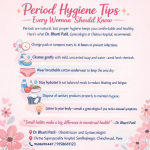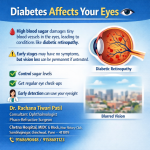Acne is one of the most common skin conditions worldwide, affecting millions of people, especially teenagers and young adults. While the breakout itself may eventually clear up, acne scars often persist, leaving behind noticeable indentations or discoloration on the skin. These scars can significantly impact one’s self-esteem and confidence, leading many to seek treatment options that offer effective, long-lasting results. Among the latest and most effective techniques for treating acne scars is Taylor Liberator Subcision, a minimally invasive procedure that promises to improve skin texture and reduce the appearance of scars.
In this blog, we’ll dive into what Taylor Liberator Subcision is, how it works, its benefits, and why it’s considered one of the best treatments for acne scars.
Understanding Acne Scarring
Acne scarring occurs when the inflammation from acne lesions damages the skin’s deeper layers. When the skin heals, it may form scars—either raised (hypertrophic or keloidal) or depressed (atrophic). Depressed scars, such as ice-pick scars, boxcar scars, and rolling scars, are more commonly treated with subcision. These scars occur when the skin’s underlying tissue becomes tethered, preventing the scar from resurfacing as the skin heals.
Acne scarring can be classified into two main types:
- Atrophic Scars: Depressed, pitted scars caused by the loss of tissue.
- Hypertrophic Scars: Raised scars that form due to an overproduction of collagen during the healing process.
Depressed scars are particularly troublesome because they are challenging to treat and usually persist longer than the acne itself.
What Is Taylor Liberator Subcision?
Taylor Liberator Subcision is an advanced technique used to treat depressed acne scars, particularly atrophic scars like ice-pick, rolling, or boxcar scars. This minimally invasive procedure focuses on breaking up the fibrous bands and connective tissue that bind the scar to the underlying skin layer.
During subcision, a specially designed needle is used to detach these fibrous bands, releasing the scar tissue from the underlying layers and allowing the skin to heal and naturally fill in the indentation. This treatment also stimulates collagen production, which helps to smooth and renew the skin’s appearance over time.
How Does Taylor Liberator Subcision Work?
The Taylor Liberator Subcision procedure is fairly simple and can typically be completed in an outpatient setting with local anesthesia or a numbing cream applied to the treatment area. Here’s a step-by-step breakdown of how it works:
- Consultation: A consultation with an experienced dermatologist or cosmetic surgeon is essential. They will evaluate the type and depth of acne scarring you have to determine whether subcision is an appropriate treatment.
- Preparation: Before the procedure, a topical numbing cream is applied to the affected area to ensure the patient is comfortable during treatment.
- Subcision Process: The provider uses a specialized needle, often referred to as the “Liberator Needle,” to perform the subcision. This needle is designed to penetrate the skin without causing significant damage, and it breaks up the fibrous tissues beneath the skin’s surface that tether the scar. The needle is carefully moved around the scar tissue, releasing the scar and allowing the skin to lift.
- Post-Treatment Care: Following the procedure, the area may be swollen or red, but these side effects typically subside within a few days. Some patients may also experience minor bruising, which fades after a few days to weeks.
- Collagen Production and Healing: As a result of the subcision, the body’s natural healing response is triggered, promoting collagen production. This helps to fill in the treated areas and restore the skin’s smooth appearance over the next few months.
Benefits of Taylor Liberator Subcision
- Minimal Downtime: One of the most attractive features of the Taylor Liberator Subcision technique is its minimal downtime. Unlike more invasive surgical procedures, subcision allows patients to return to normal activities within a short amount of time. The recovery period is generally fast, with most patients experiencing only slight redness or swelling.
- Natural Results: Subcision works with the body’s natural healing process, stimulating collagen production in the treated areas. This means that over time, the treated scars will gradually fade, leaving a smoother, more even skin texture. The results of subcision can be seen in the months following the procedure as collagen builds up and skin healing continues.
- Effective for Various Scar Types: Taylor Liberator Subcision is effective for treating different types of acne scars, especially those that are depressed or indented. It is particularly effective for ice-pick scars, rolling scars, and boxcar scars, as it targets the connective tissues that cause these scars to remain indented.
- Non-Surgical: Subcision is a non-surgical procedure, making it a less invasive and more accessible option for people looking to reduce the appearance of acne scars without undergoing major surgery.
- Long-Lasting Results: Unlike some superficial treatments, Taylor Liberator Subcision offers long-lasting results. Once the scar tissue is released and collagen is stimulated, the skin’s appearance continues to improve for up to six months after the procedure.
Who Can Benefit from Taylor Liberator Subcision?
Taylor Liberator Subcision is suitable for individuals with moderate to severe acne scarring, especially those with depressed scars like boxcar, ice-pick, or rolling scars. It can also benefit people who have not had success with other acne scar treatments.
Ideal candidates for this procedure are those who:
- Have deep, pitted acne scars
- Have relatively healthy skin
- Are looking for non-surgical treatments
- Have realistic expectations and understand that multiple sessions may be needed for optimal results
It is essential to consult with a skincare professional to assess your scarring and determine whether subcision is the right option for you.
Side Effects and Risks
Like any cosmetic procedure, Taylor Liberator Subcision carries some risks and side effects, though they are typically minimal. Common side effects include:
- Mild bruising
- Redness and swelling
- Temporary discomfort in the treated area
- Mild bleeding (rare)
These side effects usually subside within a few days to weeks. Serious complications are rare when the procedure is done by an experienced dermatologist or cosmetic surgeon.
How Many Sessions Are Required?
The number of subcision sessions required depends on the severity of your acne scars. Typically, patients undergo 2–4 sessions, spaced several weeks apart, to achieve the best results. The skin gradually improves after each session as more collagen is stimulated.
Conclusion
Taylor Liberator Subcision is an effective, minimally invasive treatment for acne scars, especially those that are depressed and difficult to treat with topical treatments alone. By breaking up the fibrous tissue that binds the scars to the skin, subcision encourages natural healing and collagen production, leading to smoother, more even skin. It’s a great option for those seeking a long-lasting, non-surgical way to improve the appearance of their acne scars.
If you have persistent acne scars that are affecting your confidence, it’s worth consulting a skincare professional to discuss whether Taylor Liberator Subcision could be the right treatment for you. Through this procedure, you can work toward achieving clearer, more beautiful skin and regaining your confidence.
For Consultation Contact us on 9158681123
Website – www.chetnahospital.co.in
Address – Chetna Hospital, Sambhajinagar, MIDC, G Block, Near Rotary Club, Chinchwad 411019
.
.
.
#hospital#pune#pcmc#chinchwad#health#healthcare#skin#dermatologist#skinspecialist#skinclinic#hairdermatologist#skindoctor#dermatologistappointment#skincareprofessional#derma#skindr













